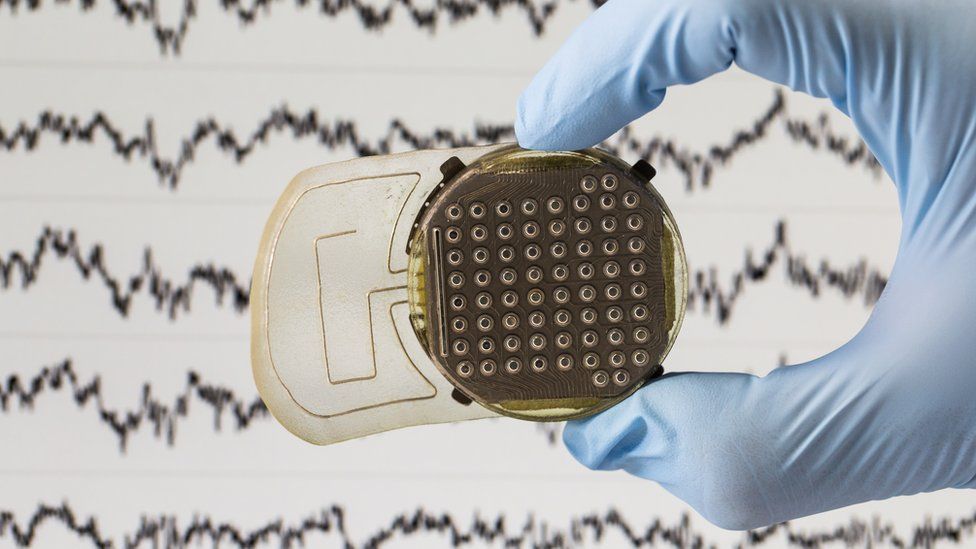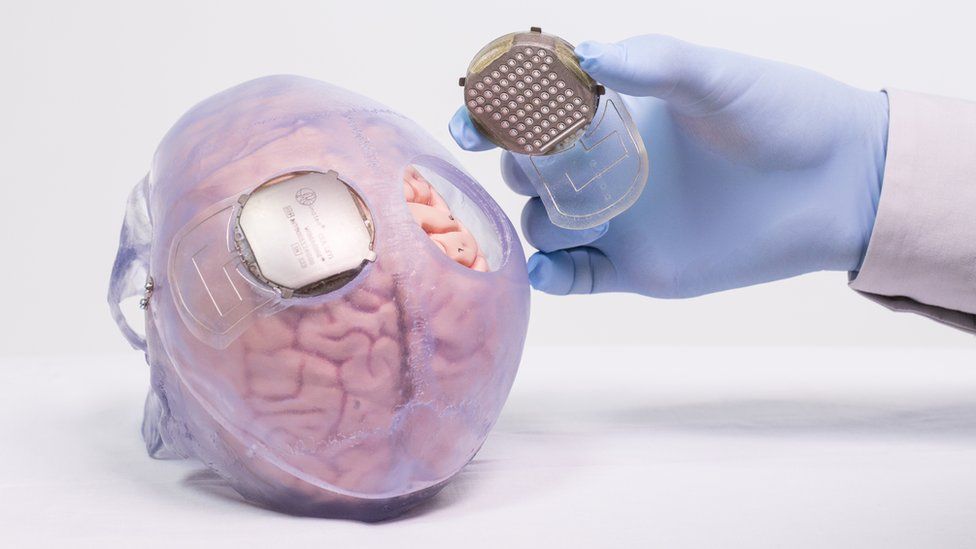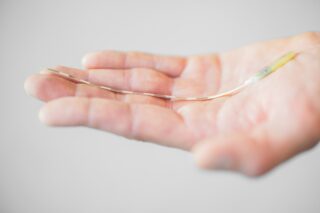A young 28-year-old quadriplegic was able to walk again thanks to a revolutionary exoskeleton and neuroprosthesis. A world first. The results of this clinical trial were presented on October 7 at the Clinatec biomedical research center in Grenoble, France.
Two devices with 64 electrodes each were implanted on each side of the patient’s head, between the skin and the brain, to record the signals emitted by his sensorimotor cortex. An algorithm was developed to transform these signals into “orders” that can be understood by a virtual avatar and an exoskeleton. The patient can walk, bend his elbow, grab an object, simply by wishing it in his head. This progress was announced in The Lancet Neurology by a team from the Clinatec research laboratory in Grenoble and the University Hospital of Grenoble, led by Prof. Alim-Louis Benabid and Stéphane Chabardes.

The test was performed on a young Frenchman paralyzed from the shoulders down after a fall. Over the past year, he has been able to simulate walking and various increasingly complex arm movements, walking 45 meters or 408 steps during the 39 sessions he followed. “I felt like the first man on the moon,” said the young man known as Thibault. “I hadn’t walked for two years. I had forgotten that I used to be taller than a lot of people in the room. It was very impressive.”
Slight drawback: the exoskeleton is still unable to manage the imbalances inherent to walking and must be fixed to a harness on the ceiling. But the researchers are very positive because the system has worked for seven weeks without the need for recalibration, proving that long-term daily use is possible.











